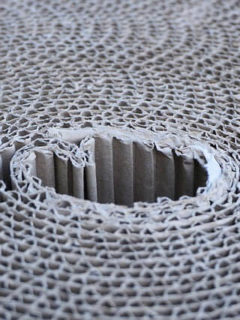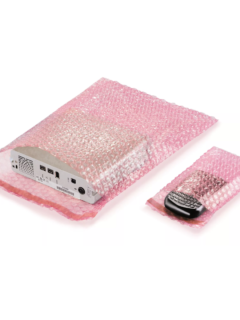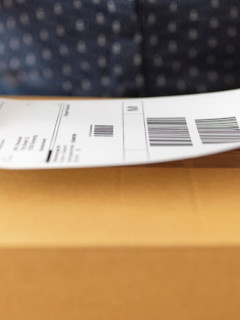Running a business and planning to buy a label printer? Read this guide. We explain the differences between direct thermal and thermal transfer labels. Find out which will work for your business.
What are thermal labels?
Thermal labels and thermal transfer labels are the two basic types of self-adhesive labels used for product labelling. The former, as the name suggests, are created using heat, and you do not need additional ink or ribbon to print them. These labels are based on thermal paper, which turns darker when exposed to higher temperatures. A special but simple printer is required to print them. It is a small device, so you can take it with you everywhere.
Key benefits of direct thermal labels
You already know that thermal labels are comfortable to use. Their other advantages are:
- Cost-effectiveness – the cost of printing thermal labels is low. Among other things, this is because you do not need to buy other materials such as ink or ribbon. For this reason, they are a good choice if you plan to print bulk quantities of labels.
- Ease of use – you don’t have to change the ribbon and this simplifies your work.
- Speed of printing – thermal labels are reliable if you are short on time.
- Quiet operation – do you run a small shop or work in an office? Then opt for thermal labels. The printers you use to produce them operate almost silently.
Disadvantages of direct thermal labels
Remember that thermal versions also have their disadvantages. The most important of these are:
- Short shelf life – you will print thermal labels efficiently, but unfortunately they can quickly lose their quality. They are most likely to fade when exposed to light, moisture or friction.
- Low resistance to chemicals – the print may become less clear after contact with oil or detergent.
- Limited choice of materials – thermal printers can only print on thermal paper. In practice, this means that you will only be able to produce self-adhesive labels with them if they are made from such paper.
Thermal labels and their use
Despite several disadvantages, the use of thermal labels is wide. They are most commonly used in:
- Cash reg isters – rapid preparation makes this type of label indispensable when printing receipts for purchases.
- Ticket v ending machines – thermal labels are also used in the printing of parking and traffic tickets.
- Food and beverage companies – you can use these labels to mark the expiry date of a product.
- Clothing shops – use a thermal label to indicate the price of a garment, its composition, country of manufacture or care instructions.
What are the characteristics of thermal transfer labels?
Unlike thermal transfer models, thermal transfer labels require the use of a special ribbon which resembles carbon paper. Under the influence of heat, the colour is transferred from the ribbon to the surface of the label. The printing process involves the transfer of the dye – hence the name of the labels. Another difference is the size of the printer. Thermal transfer versions tend to be larger than thermal. They are stationary devices and therefore primarily suitable for industrial purposes. You will also find printers for self-adhesive labels among them.
Thermal transfer labels and their advantages
There are many advantages to using thermal transfer labels, such as:
- Print durability – abrasion or intense sunlight will not adversely affect the appearance of the labels.
- Versatility – you can print them using not only paper, but also film and other materials.
- Print quality – detailed graphics and clearly visible lettering are the hallmarks of such prints.
Disadvantages of thermal transfer labels
Wondering if thermal transfer labels have disadvantages? Of course, this solution is not without them. A few of these are:
- High running costs – by using colour ribbons for printing, the process is more expensive compared to thermal labels.
- Systematic maintenance – you have to remember to replace the ribbon every so often and maintain the printer.
- Limited print speed – thermal transfer printers are more precise, but also slightly slower than thermal.
Application of thermal transfer labels
Thermal transfer labels are used in many industries – mainly in industry. Consider buying them if you are running:
- A warehouse or logistics company – not sure what to print address or product information labels on? A thermal transfer printer will be a good idea if you want labels that will not deteriorate over time.
- Pharmaceutical companies – use it for labelling medicines.
- Food companies – expiry date, preparation method. These are just a selection of the information you can include on such a label.
- Appliance companies – labels can also be used for labelling machines and spare parts.
Direct thermal versus thermal transfer labels – which is the better choice?
If you need to print labels quickly or want to reduce costs, opt for the thermal version. On the other hand, if quality and durability are your priorities, consider the thermal transfer variant. Remember that you can find more articles on similar topics on our blog, such as Best ways to label cartons in the warehouse.














